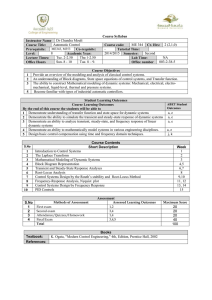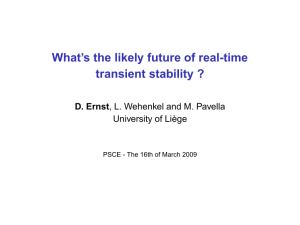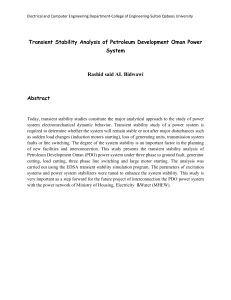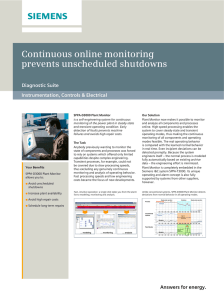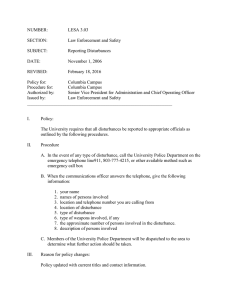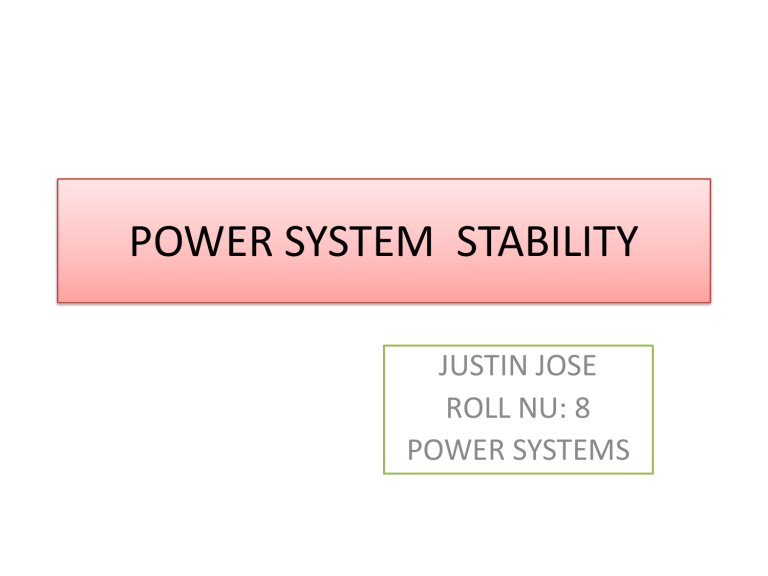
POWER SYSTEM STABILITY JUSTIN JOSE ROLL NU: 8 POWER SYSTEMS WHAT IS STABILITY • The tendency of a power system to develop restoring forces equal to or greater than the disturbing forces to maintain the state of equilibrium is known as stability. If the forces tending to hold machines in synchronism with one another are sufficient to overcome the disturbing forces, the system is said to remain stable (to stay in synchronism). • The stability problem is concerned with the behavior of the synchronous machines after a disturbance. • stability problems are generally divided into two major categories — steady-state stability and transient stability • Steady-state stability… refers to the ability of the power system to regain synchronism after small and slow disturbances, such as gradual power changes. An extension of the steady-state stability is known as the dynamic stability • The dynamic stability …is concerned with small disturbances lasting for a long time with the inclusion of automatic control devices. • Transient stability… studies deal with the effects of large, sudden disturbances such as the occurrence of a fault, the sudden outage of a line or the sudden application or removal of loads. Transient stability studies are needed to ensure that the system can withstand the transient condition following a major disturbance. SWING EQUATION ASSIGNMENT…… • HW ABOVE FIGURE CAME……. Swing eqn contd….. EQUQL AREA CRITERION APPLICATION TO SUDDEN INCREASE IN INPUT REFER…… IN ……REFERENCES • Power System Analysis - Hadi Saadat • power system analysis by nagrath and kothari THANKS
